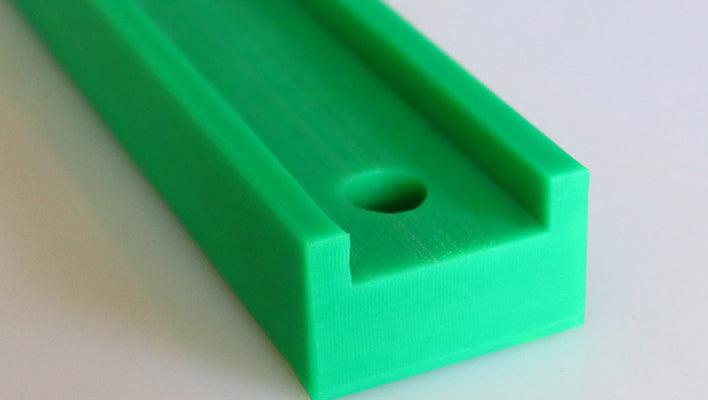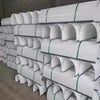Ultra High Molecular Weight Polyethylene (UHMW) sheets are gradually gaining prominence across various industries requiring materials with high strength, durability and chemical resistance. Compared to traditional plastics, UHMW sheets manifest exceptional properties like abrasion resistance, low friction coefficient and impact resistance {UHMW sheets benefits}.

As demands grow for lightweight and reliable materials in manufacturing, UHMW rises as a sustainable and cost-effective alternative to metals or wood. Global UHMW sheets market is projected to reach $1.8 billion by 2027, at an annual growth rate of 9.4% from 2020 to 2027 (Allied Market Research).
Hence an in-depth comparison of UHMW’s properties {UHMW plastic properties} with existing thermoplastics is meaningful for both engineers and procurement managers innovating this versatile material into their production line or end-products. This article provides a detailed feature-by-feature analysis on how UHMW polyethylene {UHMW polyethylene applications} fares across key parameters and helps identify the right fit for specific applications.
What are UHMW Sheets?
UHMW belongs to the broader family of polyethylene plastics, but with an ultra high molecular weight (3.1 to 6 million g/mol) that sets it apart. These long polymer chains bolster UHMW with exceptional strength and resistance capacities suited for the most demanding applications.
Some standout properties of UHMW sheets are:
- Extreme abrasion resistance, beyond other engineering plastics
- Up to 250 times of HDPE, 500 times for polypropylene
- Low coefficient of friction
- Static COF: 0.1 to 0.3, Dynamic COF: 0.03 to 0.3
- High impact strength
- No break upto -150°C, suitably performing at sub-zero temperatures
- Lightweight, EASY to fabricate into components
- Excellent chemical resistance to acids, bases, alcohols etc
- Weathering resistance, stable against UV rays, moisture etc
- Bio-inertness
Owing to this exclusive combination of features, UHMW sheets find widespread use in parts and components exposed to friction, corrosion, harsh weather elements or requiring to withstand impact. This includes materials handling equipment, dock fenders, star-wheels, conveyor side guards, processing machine parts amongst others. Further sections analyze how UHMW sheets fare when compared to other competing plastics.
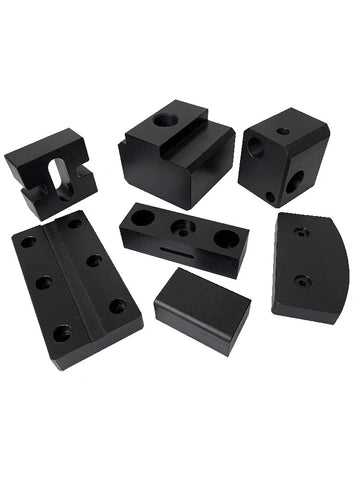
Comparison with Other Plastics
UHMW vs Acrylic
Acrylic is a popular material when optical clarity and UV resistance are vital, for applications like signboards, aquariums, lenses or lighting fixtures. {UHMW versus acrylic} But UHMW trumps heavily in mechanical strengths.
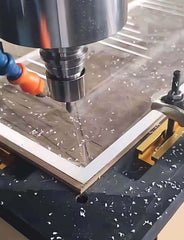
UHMW sheets {UHMW sheets durability} have outstanding abrasion resistance that acrylic lacks, causing the latter to become stress cracked and opaque under repeated surface wear conditions. UHMW retains dimensional stability and functionally even when dragged over abrasive belt surfaces over long durations. This is vital in parts like conveyor side guards, hopper liners for movement of hard minerals, blast booth wall protection applications demanding wear resistance under heavy friction conditions etc. Tests have revealed UHMW sheets to demonstrate abrasion resistance of 4-10 times that of acrylic material.
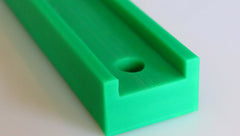
Further, UHMW’s {UHMW sheets resistance properties} resistance to corrosive chemicals and most solvents gives it an edge over acrylic’s higher susceptibility when chemical contact is involved. Acrylic tends to crack easily upon exposure to chemicals like acetone, methylene chloride or dimethyl formamide that UHMW withstands.
That said, acrylic continues to be a choice material when optical clarity is required, like in sterile transparent panels or green house glazing applications. {UHMW sheets cost comparison} But UHMW steals the show in mechanical wear performance - vital for parts seeing high friction contact.
UHMW vs HDPE
{UHMW and HDPE comparison} - High density polyethylene is known for excellent chemical resistance properties. Combined with low coefficient of friction, HDPE sees widespread use in the bottle, container and packaging industry. {UHMW environmental impact}
However HDPE has much lower abrasion and scratch resistance capacities compared to UHMW. On relative scale, UHMW demonstrates nearly 100-250 times the wear strength of HDPE material. Thus while HDPE suffices for packaging applications seeing limited mechanical wear, UHMW is the material of choice where friction and scratch resistance are vital - like in conveyor side guards, chute/hopper liners, gear wheels etc.

Further, UHMW demonstrates {UHMW sheets industrial use} superior low temperature impact strength retaining good tensile strength even at cryogenic temperatures as low as -150°C. HDPE turns brittle and gets fracture prone upon lower temperature exposure below -60°C.
Thus UHMW demonstrates better versatility - combining chemical inertness for which HDPE is known - while also possessing mechanical strengths much higher.
UHMW vs Polycarbonate and PVC
{UHMW sheets vs polycarbonate} - Polycarbonate is a high performing clear amorphous thermoplastic. Optical clarity combined with high impact strength and heat resistance makes polycarbonate a good choice for applications like machine covers, lenses, transparent sheeting.
{UHMW vs PVC} - PVC or Polyvinyl chloride offers excellent corrosion resistance like UHMW, which when combined with low cost, makes it attractive for the construction industry - pipes, window frames, door / window fittings like handles etc.
But {UHMW plastic strength} UHMW sheets outperform both polycarbonate and PVC on parameters like tensile/compressive strength, rigidity, abrasion resistance and bearing strength. UHMW offers 2-10 times the abrasion and wear resistance of polycarbonate and PVC, thus proving more long lasting in mechanically wearing conditions. Tests reveal that UHMW retains functionality despite loss of 250 times more volume material loss to wear, compared to PVC and acrylic plastics.
{UHMW sheets cost comparison} Further, while initial material price per pound of UHMW is higher than polycarbonate and PVC, the exponential lifecycle cost gains due to exceptional operational durability provide better value over longer term.
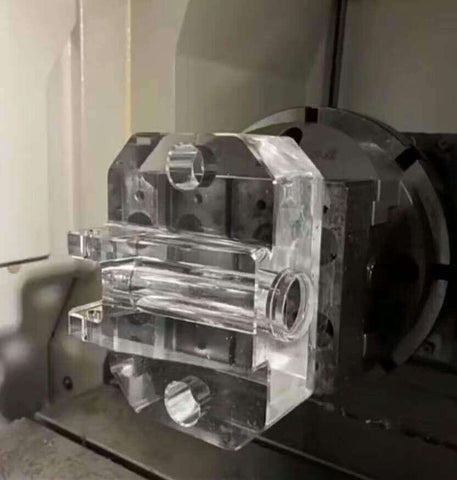
Unique Advantages of UHMW Sheets
We observed how UHMW sheets fare comparably or outperform acrylic, HDPE, polycarbonate and PVC on several vital parameters. But what truly sets UHMW apart is some unique value offerings:
- Abrasion Resistance - UHMW demonstrates abrasion resistance upto hundreds of times stronger than competing plastics. This contributes to exceptionally long working lifespans over 30-40 years in abrasive conditions.
- Impact Resistance - With high strength retention even as temperatures dip to sub-zero ranges, UHMW provides consistent impact resistance performance over a wide working temperature range of –150°C to +80°C.
- Chemical Resistance - Broad chemical compatibility allows use of UHMW parts in chemical transport, storage equipment - resisting exposure to acids, alkalis, ethanol, fuels etc.
- Noise Dampening - Up to 20-25% lower noise ranges during functioning compared to metals - an additional side benefit.
- Bio-inertness - No reactivity or leaching into food media as per FDA compliance enables extensive usage replacing stainless steel in food production equipment.
Above advantages make UHMW a high performing substitute choice invading traditional metal, wood and alloy applications across industries. Custom potential through machining or molding capacities contributes to its growing appeal.
{UHMW plastic sustainability} Further, easy disposability after use and recycling without deterioration of properties grant UHMW environmentally responsible credentials.

Applications and Versatility
We saw UHMW’s expanding penetration as an effective alternative dislodging hazardous plastics, conventional materials like wood, rubber, steel from demanding applications. A few areas worth highlighting where UHMW brings tremendous value are:
Food Processing - Compliant for direct food contact as per FDA, UHMW offers corrosion resistance replacing metals combined with mechanical wear strength vital for equipment life. Used in extruders, slicers, dicers, conveyors etc.
Mining - Hopper, chute, screen and vibrating equipment liners benefit from UHMW’s shielding against highly abrasive ores/minerals handled.
Chemical Transport - Whole tanker bodies, valves, seals being actively replaced by custom molded UHMW parts, preventing cross contamination while offering structural reliability.
{UHMW sheets uses} From telescope mirror covers needing scratch protection, to field research station wall panels in Antarctica able to withstand freezing temperatures, to portable synthetic ice rink surfaces, UHMW demonstrates versatile utility across vastly different engineering domains.
{UHMW applications in engineering} design also gain from UHMW’s lubricant-free movement as well as noise dampening abilities. Expanding customization and secondary fabrication potential enables meeting specific user requirements.

Cost and Manufacturing Considerations
{UHMW sheets cost comparison} Against perception of plastic solutions being low-cost, UHMW sheets come at a higher initial purchasing price than competing plastics. However the exponential gains in operational lifespan and low replacement frequency offset this initial investment.
Industry pricing of standard UHMW sheets - 2m x 1m of 10mm thickness, range within US$ 250-400 per sheet. Compared to other materials (metals, fiberglass) for equivalent sized sheets/plates used in high wearability applications, UHMW remains overall economical choice considering lifecycle.
On manufacturing front, choice of quality assurance and sustainability practices by producers merits consideration:
- UHMW manufacturers with in-house resin production offer consistency versus compounding from external resin sources
- {UHMW sheets quality comparison} Quality certifications like FDA, REACH, RoHS signal controlled and standardized manufacturing practices
- {UHMW plastic sustainability} Environmentally responsible production - non-toxic emissions, recycling practices etc add value
Procurement decision makers stand to gain by factoring these aspects influencing quality, replacement cycles and ESG performance.
Manufacturing & Disposal Considerations
An important contributor to UHMW sheets’ growing appeal is the relative ease and environment-friendliness related to both manufacture as well as post-use disposal.
Manufacturing
- Base polyethylene resin manufacture uses heat, pressure and Ziegler-Natta catalysts
- Sheets made through calendaring and compression molding offer dimensional stability
- Ease of custom fabricating - machining, laser cutting, welding, secondary molding
- {UHMW sheets manufacturing} Consistent quality output aided by process automation
Disposal
{UHMW plastic sustainability} Sustainable virtues are:
- Recyclability - Capability to reprocess and repurpose post-use UHMW instead of landfill waste
- Non-toxic - Free of additives like plasticizers or BPA, avoids soil/groundwater contamination
- {UHMW environmental impact} Chemically inert, non-hazardous emissions when incinerated
- Low carbon footprint relative to traditional materials like metals/alloys
Thus UHMW scores on safe recyclability and environmentally clean exit from usable lifecycle.
Through a detailed comparison of material properties, performance metrics and end-application fitment analysis, this guide aims to develop an understanding into:
- The composition and properties of UHMW sheets
- How they compare against workhorse plastics - acrylic, HDPE, polycarbonate and PVC
- The unique advantages UHMW presents over competing materials
- Diverse expanding application landscape for UHMW sheets
- Cost, manufacturing & sustainability considerations
Engineers exploring UHMW as a high-strength substitute even in demanding applications can make an informed adoption decision based on above comparative understanding.
{UHMW sheets for specific industries} With custom fabricating ease, recyclability and long operational lifespan, UHMW sheet usage continues strong growth across industries like bulk materials handling, food processing, mining, transportation, sports infrastructure etc.
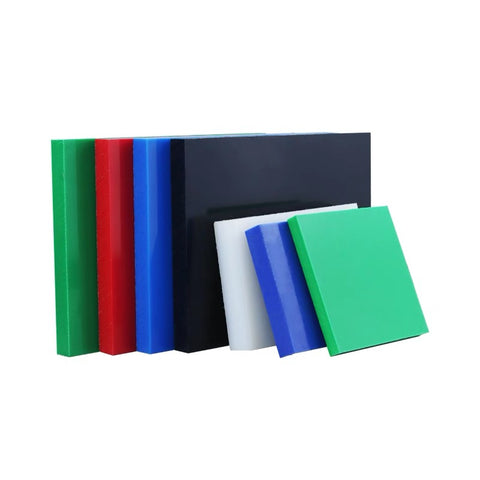
FAQs
Q1. How easy or difficult is it to machine UHMW sheets into custom parts compared to metals and fiberglass?
Q2. Which plastic would last longer in an outdoor application - UHMW or Polycarbonate? How do their weathering resistances compare?
Q3. Can UHMW sheets withstand freezing temperatures without growing brittle or losing impact strength?
Unlock the Potential of UHMW Plastic for Your Projects: Your Gateway to Customized Solutions!

